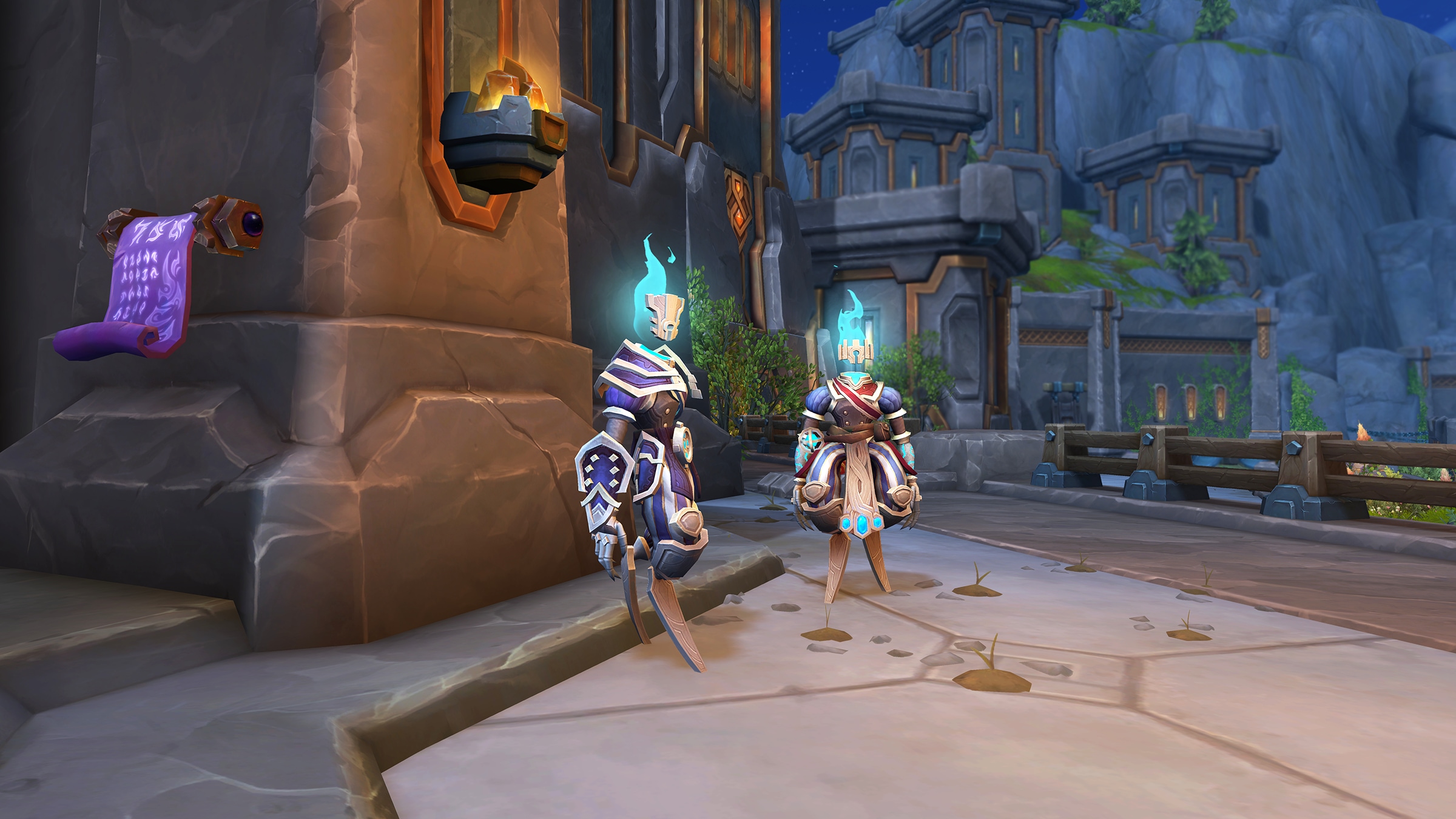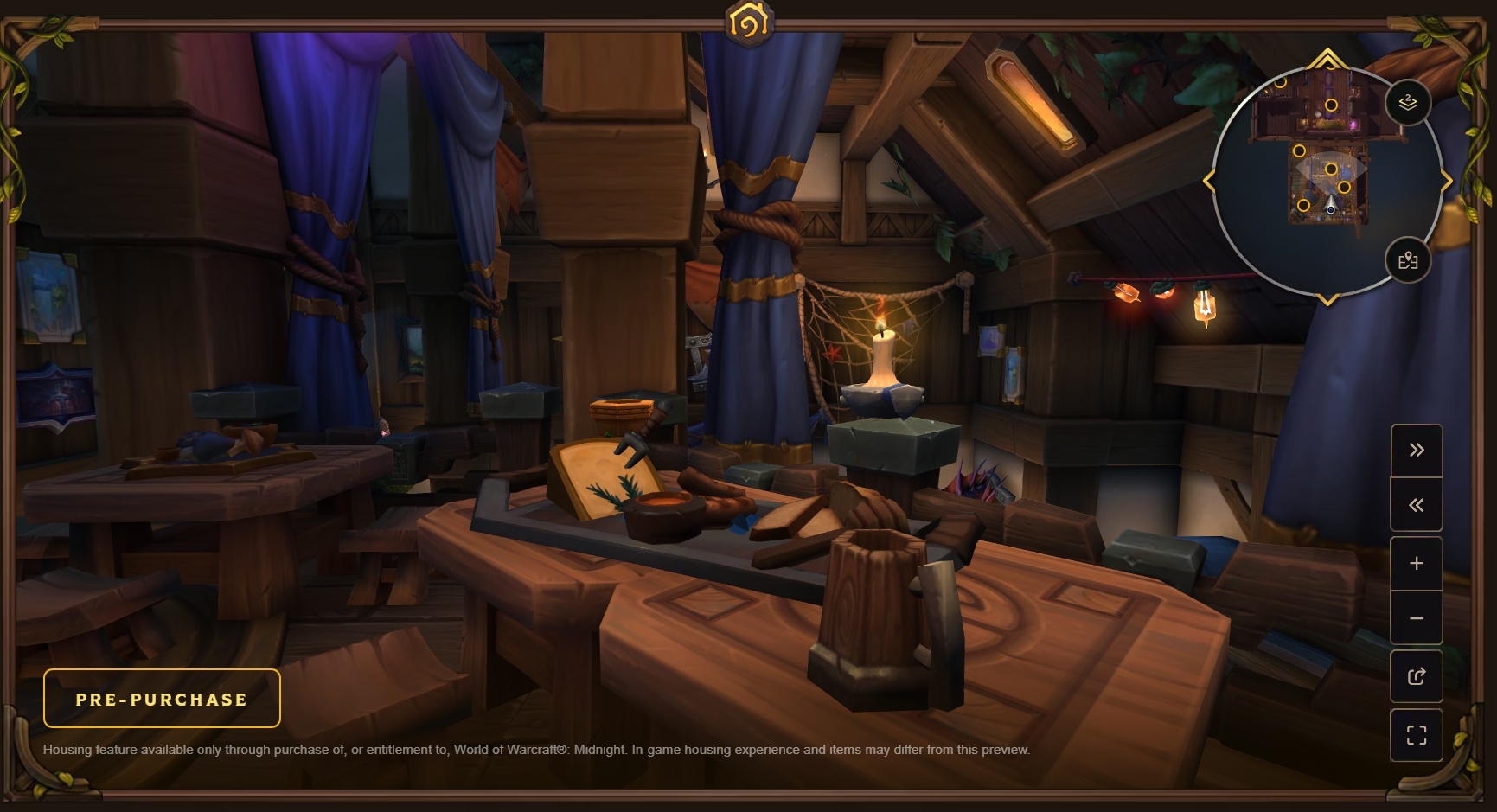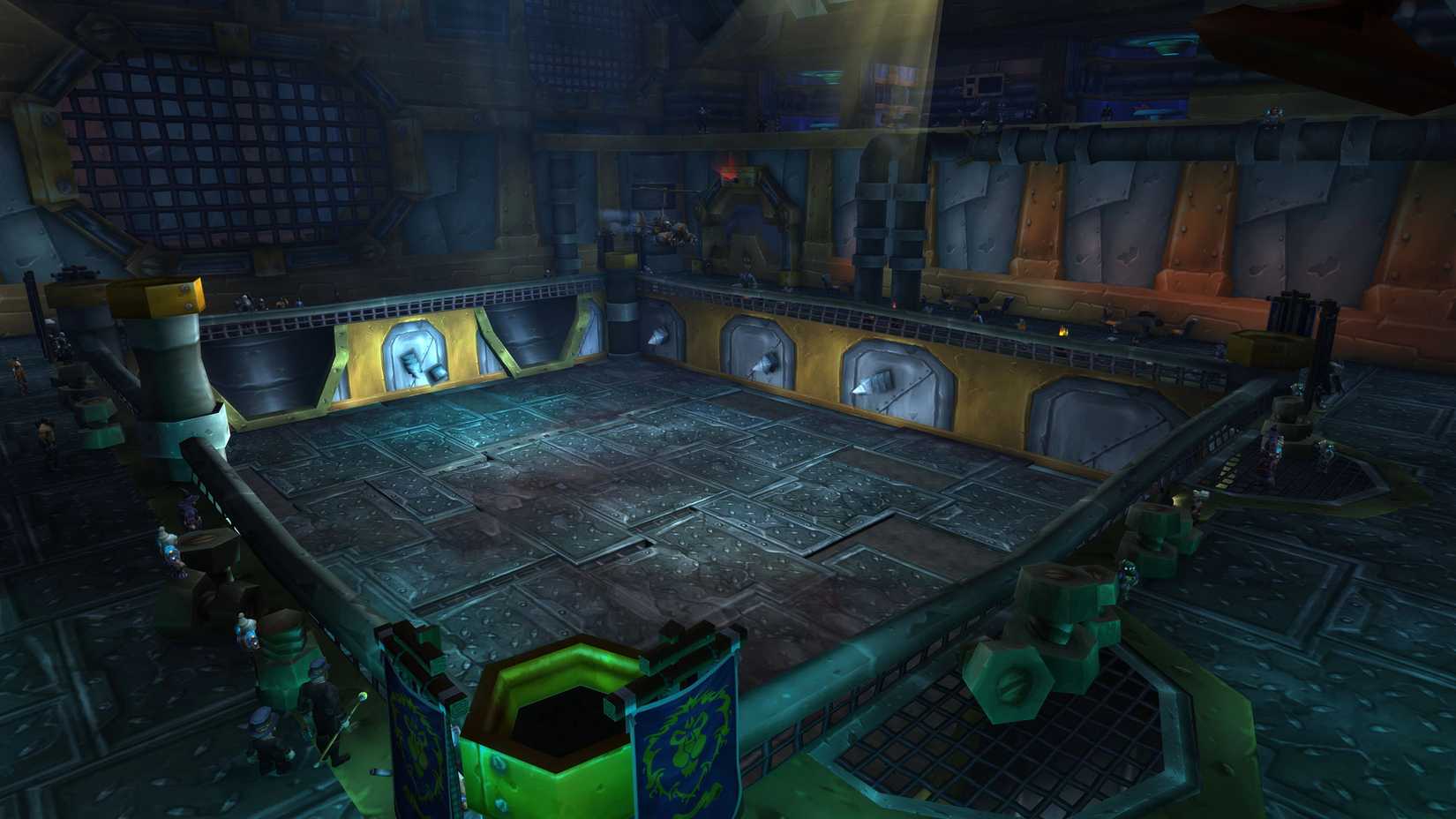
The World of Warcraft community is currently facing a seismic shift with the upcoming Midnight expansion, the second chapter of the monumental Worldsoul Saga. While the expansion is set to deliver highly-anticipated features like Player Housing and a new Devourer Demon Hunter specialization, the biggest headline is the radical change—or outright removal—of functionality for some of the game’s most ubiquitous and high-CPC combat-focused add-ons, most notably the community-favorite WeakAuras.
Blizzard Entertainment’s latest move targets what it describes as the “add-on arms race,” a decades-long cycle where increasingly complex raid and Mythic+ dungeon mechanics forced players to adopt powerful add-ons for essential real-time combat guidance, which in turn compelled developers to create even more intricate encounters. This controversial development represents a clear effort to re-establish control over end-game gameplay and MMORPG accessibility, forcing a dramatic pivot in how high-level content is consumed.
SEO Keyword Focus: World of Warcraft, Midnight Expansion, WoW Addons, WeakAuras, Deadly Boss Mods (DBM), Player Housing, New Class Spec, MMORPG Gameplay, Raid Mechanics, Accessibility. High-CPC terms are strategically integrated into the core narrative and technical breakdown of the changes.
The WeakAuras Conundrum: Why the Addon is Under Threat
WeakAuras, a highly flexible and powerful user-interface customization tool, is arguably the most affected by the new API restrictions in the Midnight alpha. The add-on allows players to create custom visual and audio alerts for almost any in-game event—tracking crucial buffs, debuffs, ability cooldowns, and, most critically for end-game PvE, automating complex in-combat decision-making processes tied to boss mechanics. For years, custom WeakAura strings have been an unspoken requirement for tackling Mythic Raid and high Mythic+ Key content, transforming visual cues into simple, unmistakable alerts.
- The Core Change: Blizzard is disabling add-ons’ ability to read real-time combat data, including in-depth character state information (buffs/procs) and detailed combat log events, particularly within Raid and Mythic+ instances.
- The Impact on WeakAuras: According to statements from the WeakAuras development team, the severity of these restrictions is so absolute that the core logic—conditions, actions, and multiple triggers—required for a functional combat-focused version would be virtually impossible. The team has made the difficult decision to not release a version for Midnight, stating that the resulting product would be “barely recognizable.”
 This is more than a simple UI tweak; it’s a philosophical declaration. The developer’s goal is to remove the “problem-solving, real-time computation” from third-party tools and return the focus to pure player reaction and encounter clarity. The loss of WeakAuras’ robust tracking capabilities is a profound loss for many players, particularly those with accessibility concerns who relied on the add-on’s custom audio and visual cues to play effectively (Source: Multiple Alpha Reports and Developer Statements).
This is more than a simple UI tweak; it’s a philosophical declaration. The developer’s goal is to remove the “problem-solving, real-time computation” from third-party tools and return the focus to pure player reaction and encounter clarity. The loss of WeakAuras’ robust tracking capabilities is a profound loss for many players, particularly those with accessibility concerns who relied on the add-on’s custom audio and visual cues to play effectively (Source: Multiple Alpha Reports and Developer Statements).
DBM and the Future of Boss-Timer Addons
The essential raid-and-dungeon-timer add-ons, Deadly Boss Mods (DBM) and BigWigs, are also directly in the line of fire. These tools, which have been a staple of the WoW raiding scene since the game’s earliest days, rely on parsing combat log data to provide accurate, pre-warned timers and instructions for upcoming boss mechanics.
- Functionality Severely Limited: The new “black box” approach to combat data means that the in-the-moment, highly precise call-outs that define DBM will be significantly curtailed. While the author of DBM, MysticalOS, has assured the community that DBM “isn’t going anywhere,” it will have to adapt its core function to align with the new, restricted API.
- Blizzard’s In-House Solution: To fill the massive void left by these tools, Blizzard is implementing its own comprehensive suite of built-in features. This includes an officially-sanctioned boss-ability timer bar, an improved Cooldown Manager, and enhanced nameplate features to better communicate crucial combat information. The initial alpha previews of these built-in tools, however, have been met with mixed feedback, with many veteran players criticizing the lack of customization and flexibility compared to their preferred add-ons.
The overall Game Review of these changes remains divided. Proponents argue it levels the playing field, making end-game content more about core skill and less about superior software configuration. Critics fear that without the customizability of add-ons, the game will become less accessible and more frustrating, especially for healers and players managing complex rotations (Source: WoW Community Forums & Alpha Tester Feedback).
Midnight Feature Focus: Beyond the Addon Debate
While the API changes dominate the current conversation, it is crucial to remember that World of Warcraft: Midnight is poised to introduce a wealth of highly anticipated MMORPG content. This commitment to new gameplay systems demonstrates Blizzard’s continued investment in the Massively Multiplayer RPG market, offering new paths to player engagement and digital storefront success. These new features are key components of the Value Proposition for the $69.99 base expansion price point.
Player Housing: A Core Lifestyle Feature
After nearly two decades, Player Housing is finally arriving in Azeroth, going beyond a simple instanced room to become a full-blown “lifestyle” feature. This addition is a direct answer to a long-standing request and a key feature in competing MMORPGs like Final Fantasy XIV.
- Customization and Scale: Players can build, place, rotate, scale, and dye hundreds of decor items. This high degree of freedom is intended to mirror the intuitive building mechanics of The Sims 4, but within the Warcraft aesthetic.
- Neighborhoods: A unique twist is the introduction of “Neighborhoods,” shared spaces where approximately 50 players can live side-by-side, fostering a sense of community and potentially new avenues for role-play and social interaction.
- Progression and Economy: Decor items are earned through every facet of the gameplay loop: raids, quests, crafting, and achievements, ensuring the system feeds back into the core MMO economy. Early Access for pre-purchasers is slated for December 2025.
 New Specialization and Race: Expanding the Class Fantasy
New Specialization and Race: Expanding the Class Fantasy
The expansion continues to expand the core RPG elements of the game with new character options, diversifying Heroic Gameplay and offering fresh alt-leveling incentives.
- Devourer Demon Hunter: This new ranged DPS specialization for the Demon Hunter class leverages Void-themed cosmic powers, a clear narrative tie-in to the expansion’s Void vs. Light theme. This adds a critical third specification to a hero class previously limited to only two, offering greater build diversity.
- The Haranir Allied Race: The bioluminescent Haranir, an ancient race from the new zone Harandar, are joining both the Horde and Alliance. Their deep connection to Azeroth’s roots and unique aesthetic will offer a compelling new choice for character customization and role-playing.
Overhaul of Core Quality-of-Life Systems
The removal of combat add-on functionality is only one part of a broader Quality-of-Life overhaul. Blizzard is committing to improving the base user experience to reduce the need for external tools.
- Combat Assistant: A new feature designed to help players with smarter rotation logic, improved highlights, and optional single-button rotation support, aiming to smooth out the steep learning curve for many WoW specs.
- Transmogrification Updates: Significant improvements to the transmog system are on the way, reducing friction for one of the game’s most popular cosmetic customization features.
The Game Design Philosophy: A New Era of Encounter Clarity
Blizzard’s fundamental objective is to shift encounter design away from a reliance on mandatory add-ons. Game Director Ion Hazzikostas has repeatedly stressed that the core issue is the design constraint placed upon developers who had to continually account for the “optimal next step” that an add-on could calculate for a player. The changes in Midnight aim to solve this by:
- Clarity Over Calculation: Designing boss mechanics that are more clearly telegraphed visually, reducing the need for an add-on to ‘read’ the combat log and shout an instruction.
- Slower Reaction Windows: Adjusting group mechanics to have slightly longer reaction times, giving the average player a chance to process the visual information without a split-second, scripted alert.
- Reduced RNG: Minimizing chaotic, random ground effects to provide casters and ranged DPS with more predictable movement and combat engagement windows.
The future of World of Warcraft’s end-game is now a race between Blizzard’s ability to successfully bake in the necessary features, and the community’s willingness to adapt. If the new in-game tools fall short, it could lead to significant player backlash and a steep, immediate difficulty increase for all but the most elite players. This is an ongoing story of MMO evolution, where the lines between base game design and player-driven tools are being redrawn. The long-term health of the game now rests on the success of this monumental pivot.
Conclusion: World of Warcraft: Midnight is set to be one of the most transformative expansions in the MMO’s history. While the new zones, new class spec, and the long-awaited Player Housing offer immense value, the bold decision to fundamentally alter the Addon Ecosystem will be the feature that defines its legacy. Players are bracing for a period of major adjustment, but the ultimate goal—a more accessible, less mandatory-addon-reliant WoW—could revitalize the core gameplay loop for years to come.











 PUBG Mobile
PUBG Mobile  Rust
Rust  Schedule I
Schedule I  Sonic the Hedgehog™ Classic
Sonic the Hedgehog™ Classic  Garena Free Fire: Kalahari
Garena Free Fire: Kalahari  Brawl Stars
Brawl Stars  Call of Duty
Call of Duty  Valorant
Valorant  EA SPORT FC 25
EA SPORT FC 25  Among Us
Among Us